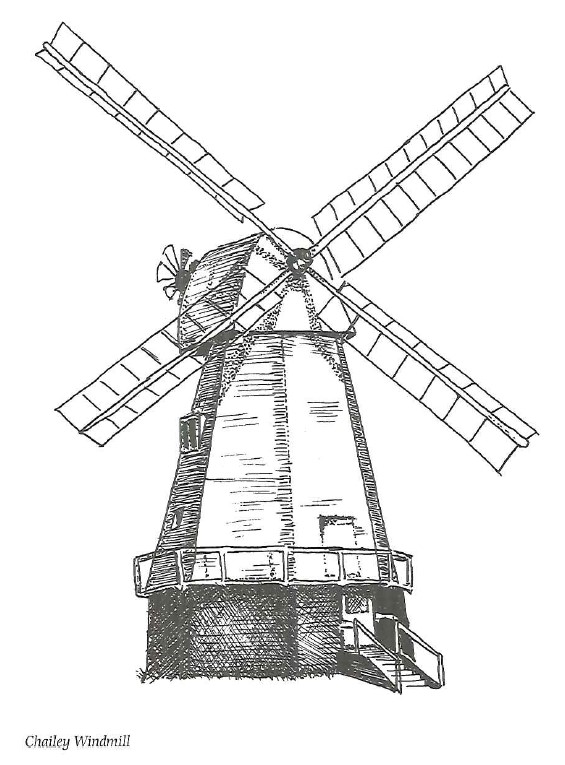George Wagner, founder of the Penitents’ Home in Brighton, waxed lyrical about the tranquillity of the village when he was curate here in the 1840s. It is still a peaceful backwater, which has not changed much since his day, so it is ironic that it has several close connections with warfare.
A roadside cross was erected by the mother of Flying Officer Peter Guerin Crofts who died after a dogfight over the village on 28th September, 1940. His Hurricane was badly hit and the young pilot baled out. His aircraft crashed at Earls Down, Red Pale, at precisely 1.55 pm and he landed at nearby South View Farm but died from his wounds. The cross, marking the spot where he fell, is tended by the Heathfield branch of the RAFA.
The late Captain ‘Mac’, Fleet Street cartoonist, camouflage expert and war hero, lived in Dallington for 45 years. He was George Douglas Machin, affectionately known locally as a charming if eccentric character. Residents would see him walking along the road, oblivious to his surroundings, pulling his folio of drawings behind him on wheels, often wearing enormous gumboots. He served as a balloon observer in the First World War, with the hazardous job of floating above enemy lines to plot their positions, and was awarded the Distinguished Flying Cross. He found fame as a cartoonist for his work on Blighty, the soldiers’ newspaper. His output was prolific throughout his life and the signature ‘Mac’ appeared on drawings in scores of publications.
Herrings Place was the big house of the village until it burned down in 1803, and two daughters from the manor
were married to generals: Mary Randoll to Lt Gen John Mackenzie (who had a distinguished career in the Marines) and Jane Crawford to Lt Col Donald MacDonald (who rose to the rank of Brigadier while serving in America). They are all buried at Dallington.
There is a strong local tradition that a man from the village fought with General George Custer at the Battle of the Little Bighorn in 1876. Such an idea is not so far-fetched as many former British Army cavalrymen swelled the ranks of the US Cavalry during the Indian wars. Unfortunately, nobody can now put a name to the recruit from East Sussex who died at the hands of the Sioux in Custer’s Last Stand at Greasy Grass.
When the Ashburnham family bought the Herrings Estate in 1801 they acquired (among other things) the Herrings pew in Dallington church. There was a long-drawn-out court case between the Ashburnhams, who wanted to preserve the pew, and the Church authorities, who wanted it destroyed to make way for general restoration. The case became too costly for the family to continue and improvements’ went ahead which were generally held to be disastrous in the old building.
Village traditions are not necessarily old. Over the past 40 or So years the older folk here have enjoyed a Christmas party organised for them by the Keeley family. Mrs Mabel Keeley, affectionately known to the children as Nanny Keeley, started it all and with her death in 1981 it was feared the tradition might not continue, but her husband Percy, his sons and friends have continued to provide Dallington’s elderly and those living alone with a party which has become a memorial to the lady who began it.
In the 1920s, little Dallington boasted no fewer than three village shops, two butchers and a post office. There was also a blacksmith and wheelwright at Woods Corner who could cut the hair of the local lads for sixpence.
